Nouveau et Vieux – French for New and Old – or so I am told by Siri on my iPhone when I asked her so politely. Nouveau et Vieux describes so beautifully what we encountered when we visited Strasbourg, France as part of my Viking River Cruise with friends in 2014. I have already told you how we started our day in Germany and how we began our tour at the Ponts Couverts before we headed into La Petite France, which is part of the UNESCO World Heritage center of Strasbourg situated on part of the Grand Ile, the historic island that makes up the center of the city. This is where we would spend our day visiting much of the Vieux, while capturing some glimpses of Nouveau here and there.
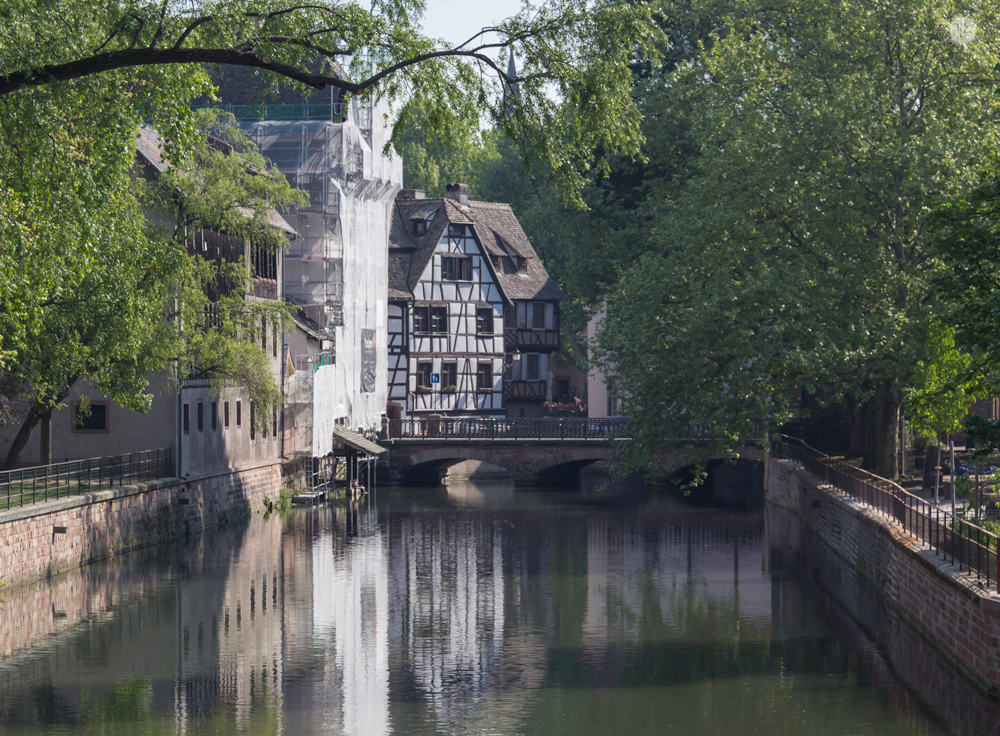
As we walked along the canals of the River Ill we saw centuries old half timber structures alongside new construction which I am sure was being done to preserve and protect rather than replace old structures with brand-new.
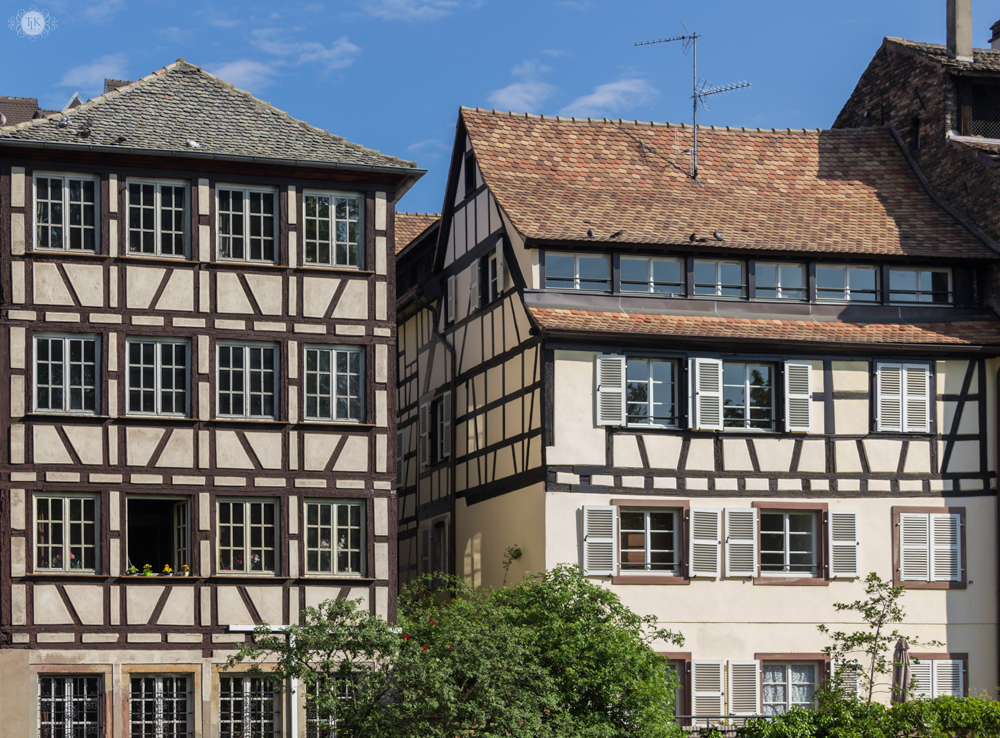
These houses along the river were so charming! We loved all the windows and shutters. And yet as old as they were, there were modern amenities like TV antennas.
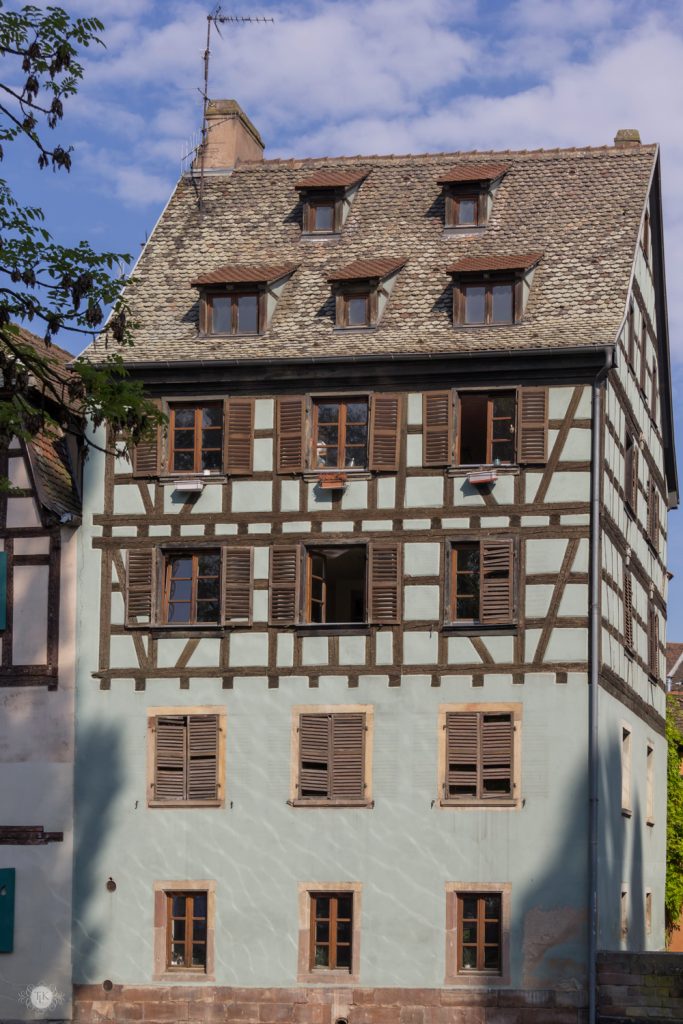
But we never saw any air conditioning units in the windows. We rarely saw any screens, either. From what our guide told us, the climate normally did not require air conditioning and bugs were not an issue. But the shutters would be used in inclement weather. I am not sure these shutters would be much use since they appeared to have seen better days. But I loved the aqua color on this house. It was not a common color for the houses that we saw so it stood out with the brown shutters and wood trim.
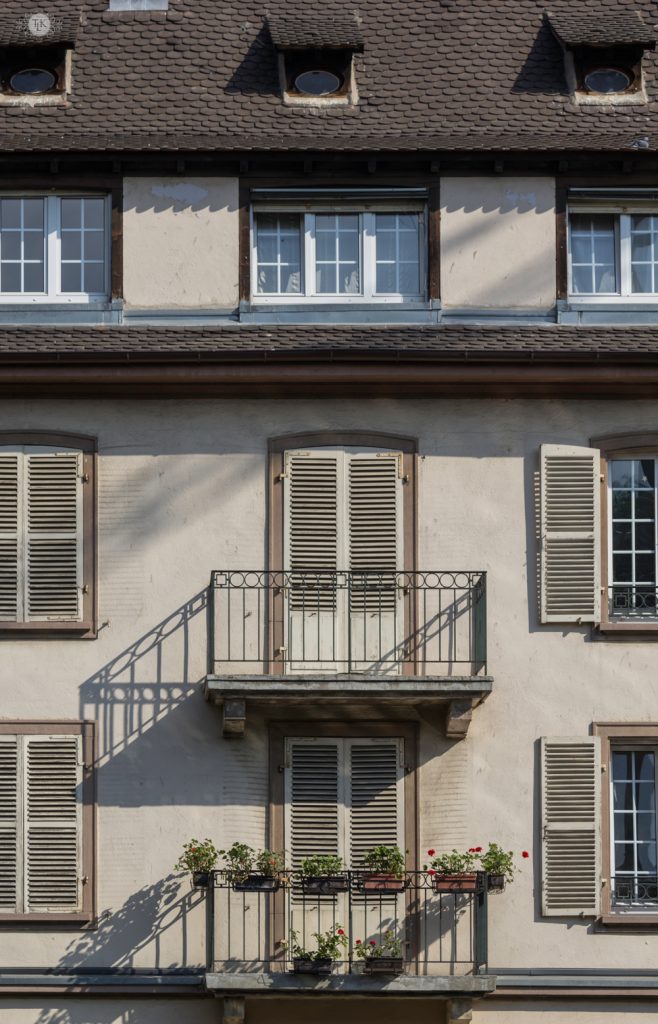
There were other types of architecture that were not as old as the half timbered buildings. They were still grand and old, with balconies and beautiful flower boxes.
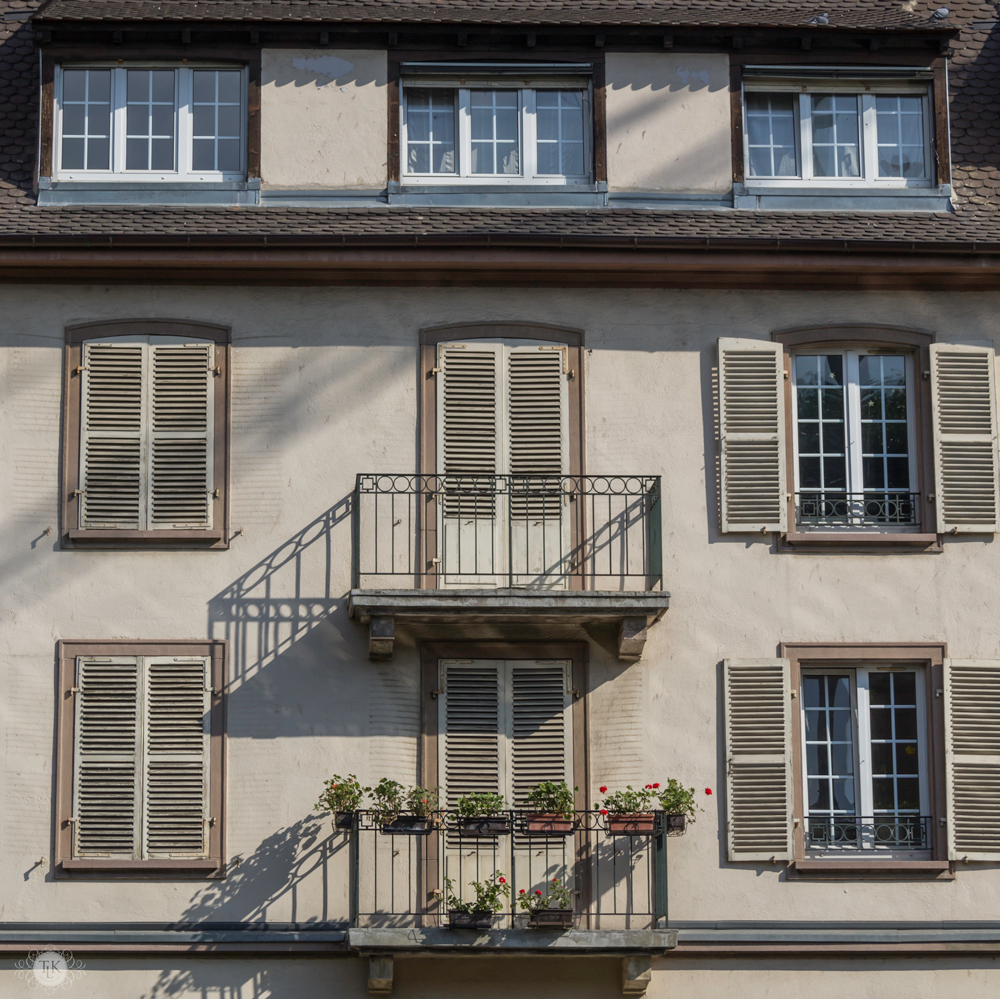
And lots of windows and shutters to keep out the sun or let it in, depending on the circumstance.
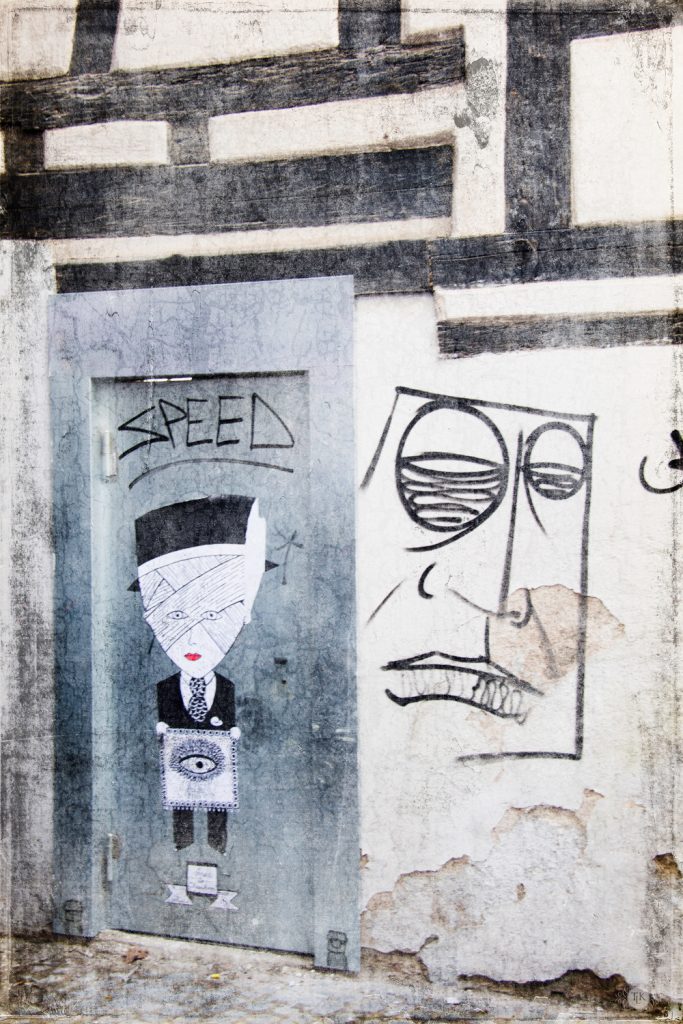
And then right in the middle of all this Vieux a piece of Nouveau would hit you right in the face, like this Speed Graffiti in a small alley between two buildings. It’s a little hard to tell in this photo that I added filters to, but the door is definitely a twenty first century addition to a sixteenth or seventeenth century dwelling.
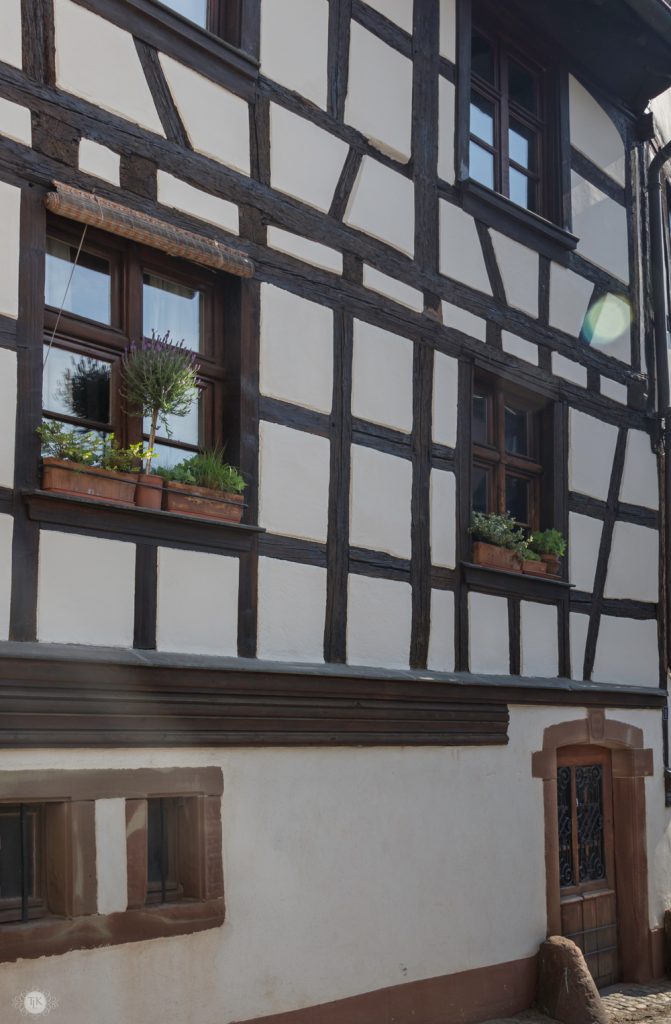
Many of the terra-cotta window boxes would have herbs and succulents along with flowers. I love the lavender topiary in this window box.
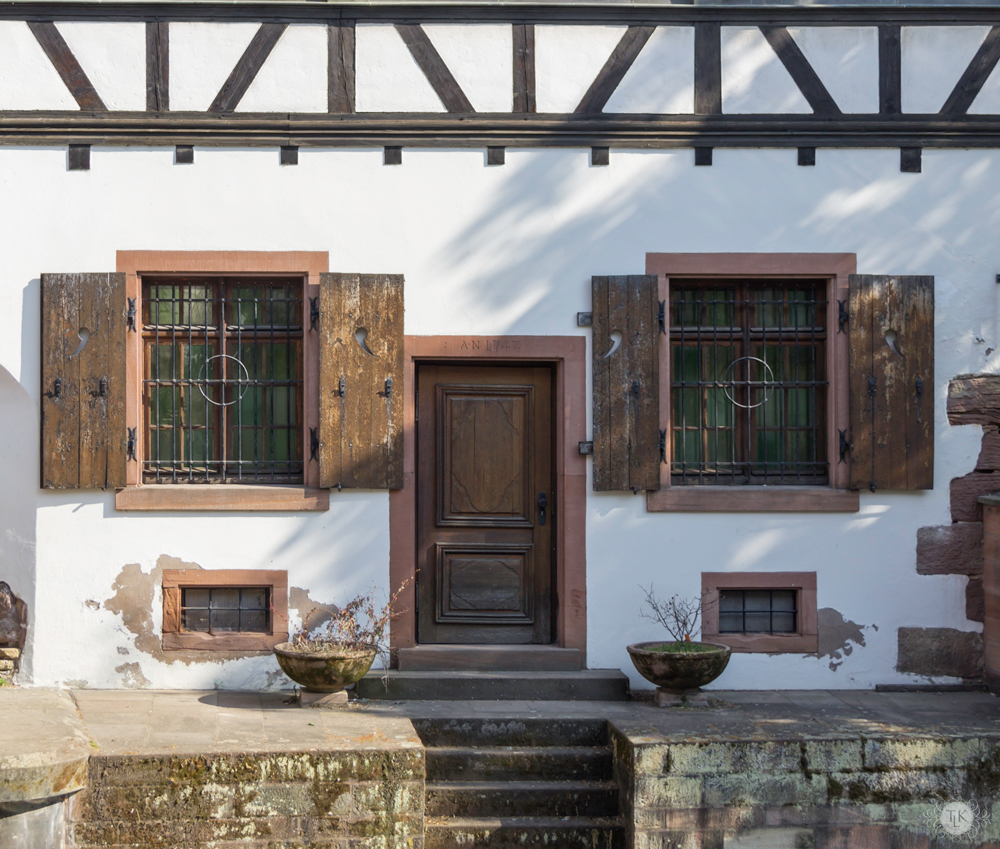
Just look at this dwelling! The date on the door is 1742. And it is just full of old world charm! In this part of France, the builder of the house would carve their initials and date into the dwelling. So someone with the initials AN built this 1742.
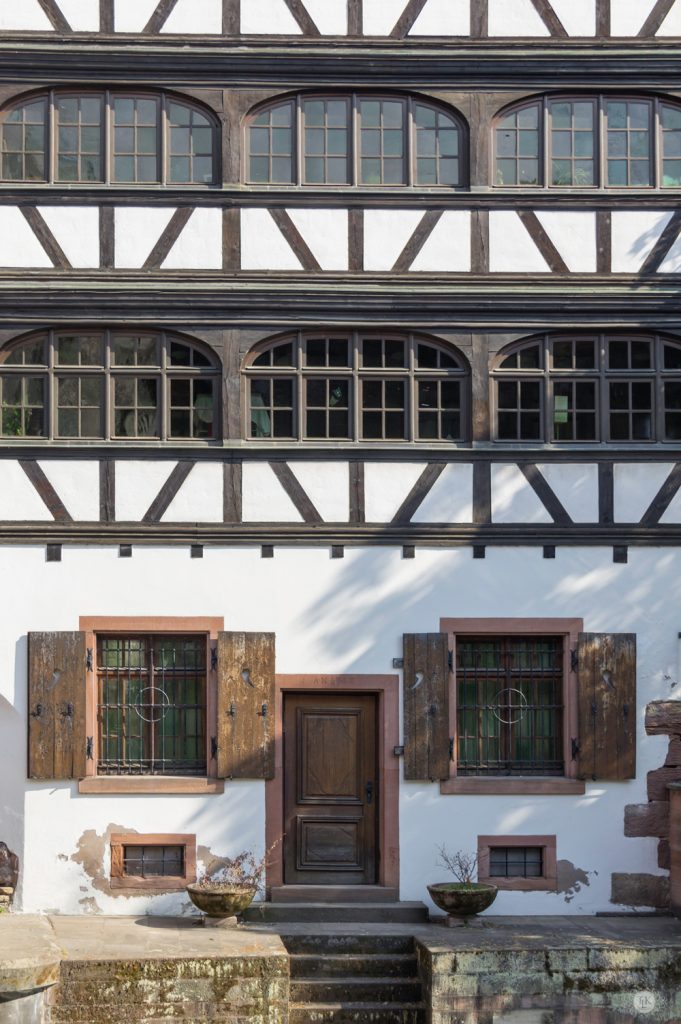
Those windows, the shutters, the planters by the door, the lichen and moss on the steps and porch! Such character!
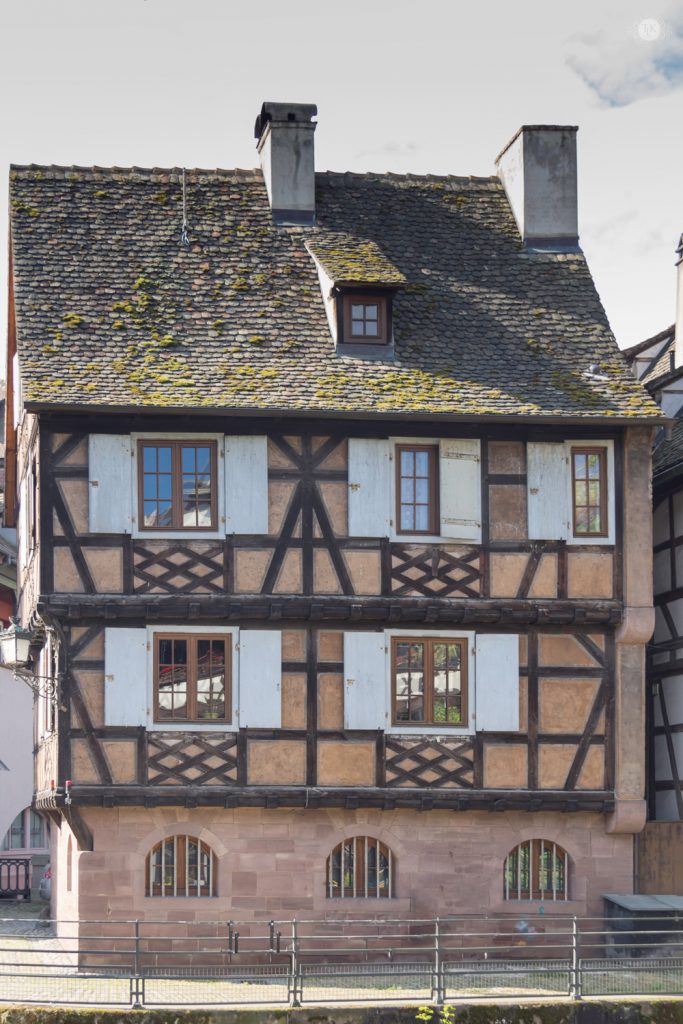
The roof on this little house even had moss! And it was rippled in places, like it had sinking spots where things had shifted over the years. Oh, what about that little single window that was added in on the third floor? So many interesting and cute little details in these houses. Did you notice too how each new level of the house extends out farther than the other? It is a term called Jettying. Each upper story is built with large horizontal beams supported on cantilevers so that the weight of the walls on the upper floors can be properly supported.
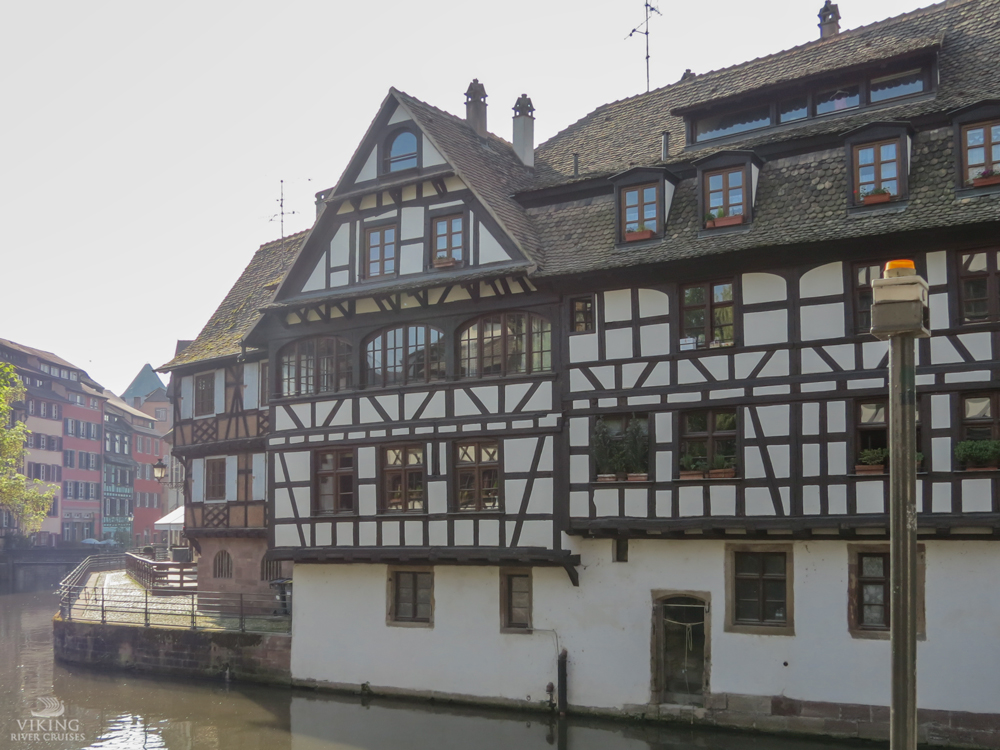
Here was another house where the upper floors extended out past the main floor. And it appeared you could just dock your boat right at your door! Notice the flashing light in the foreground – modern safety at work, keeping canal drivers safe.
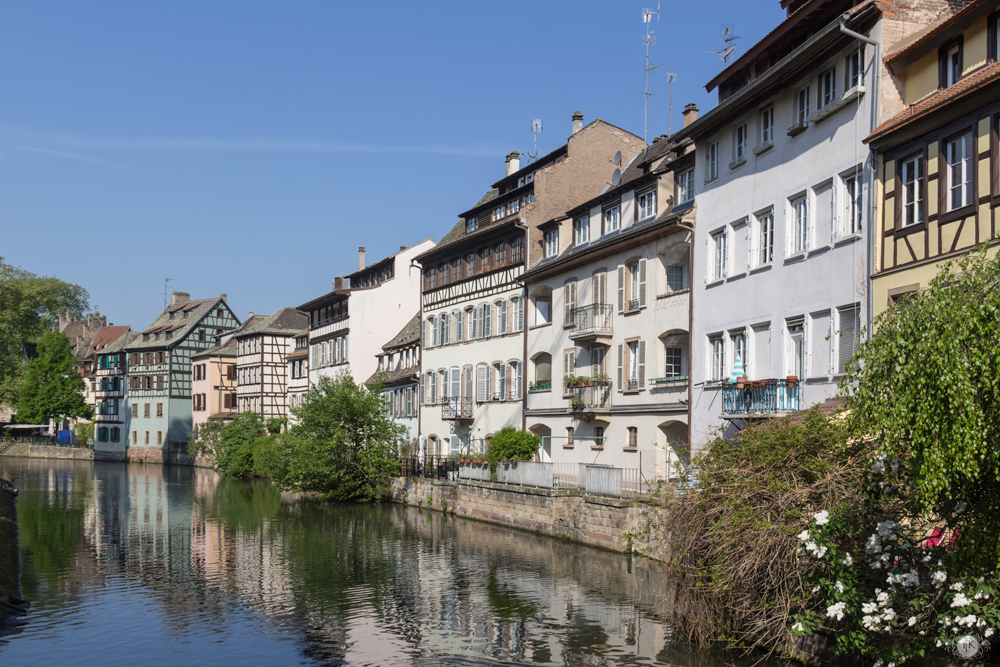
We could not get over how romantic and charming La Petite France was and we were only just beginning our visit!
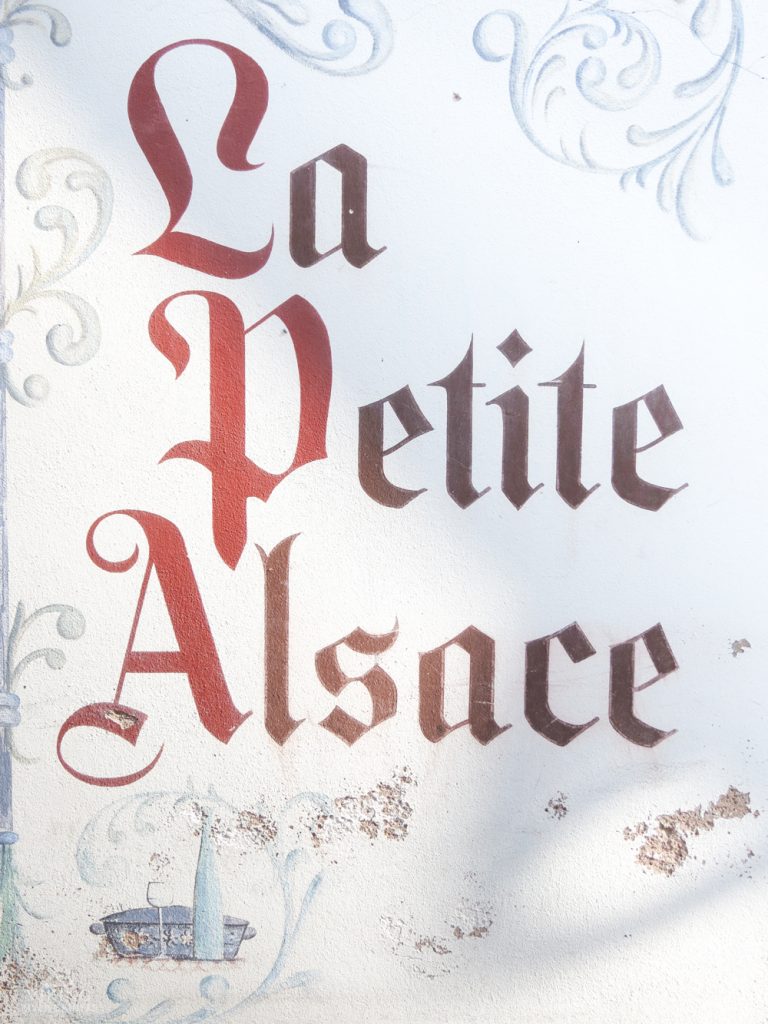
I love this painted and stenciled wall!
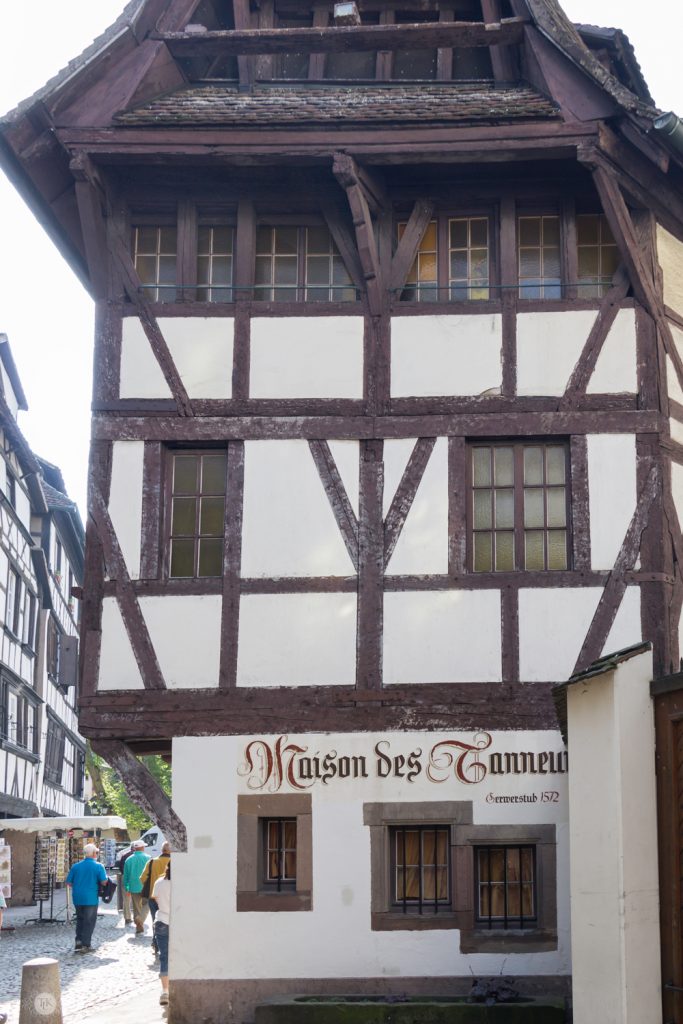
As we crossed onto the island we arrived at the famed Maison des Tanneurs – a half timbered house built in 1572.
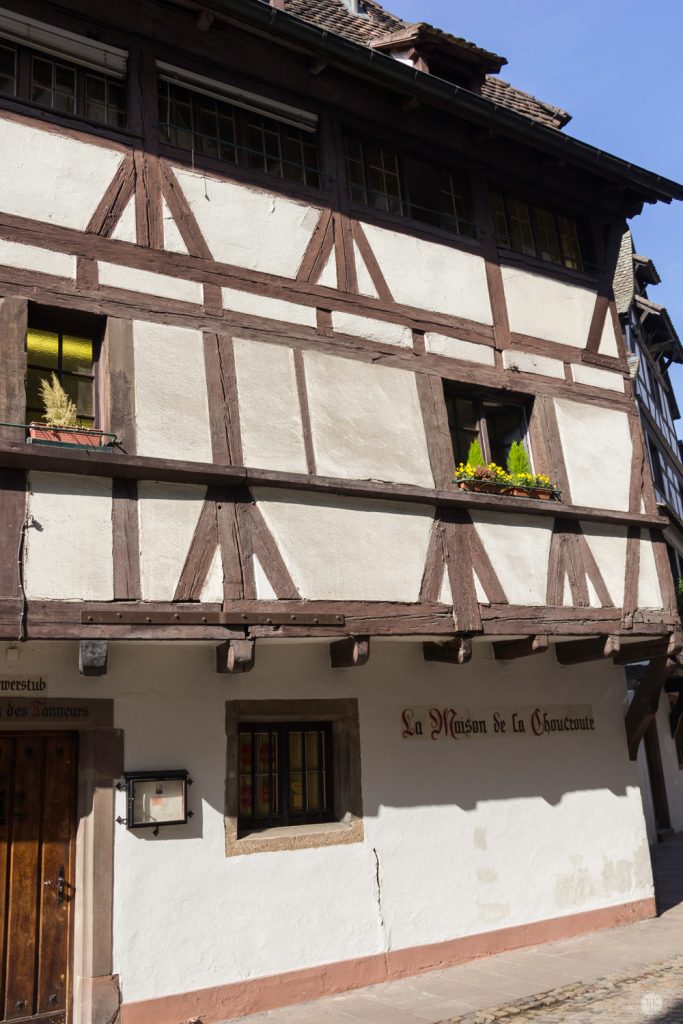
The house is named for the House of Tanners. This was the working class part of Strasbourg centuries ago and this was the Tanner District, where those that worked in that industry lived.
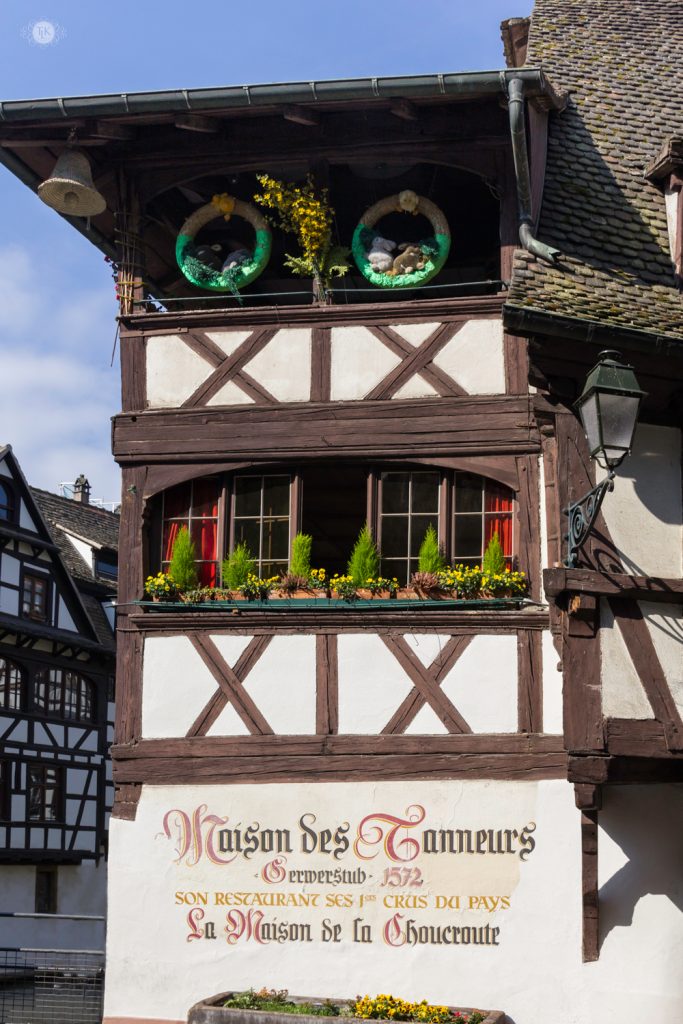
In 1927 this building was added to the historic registry.
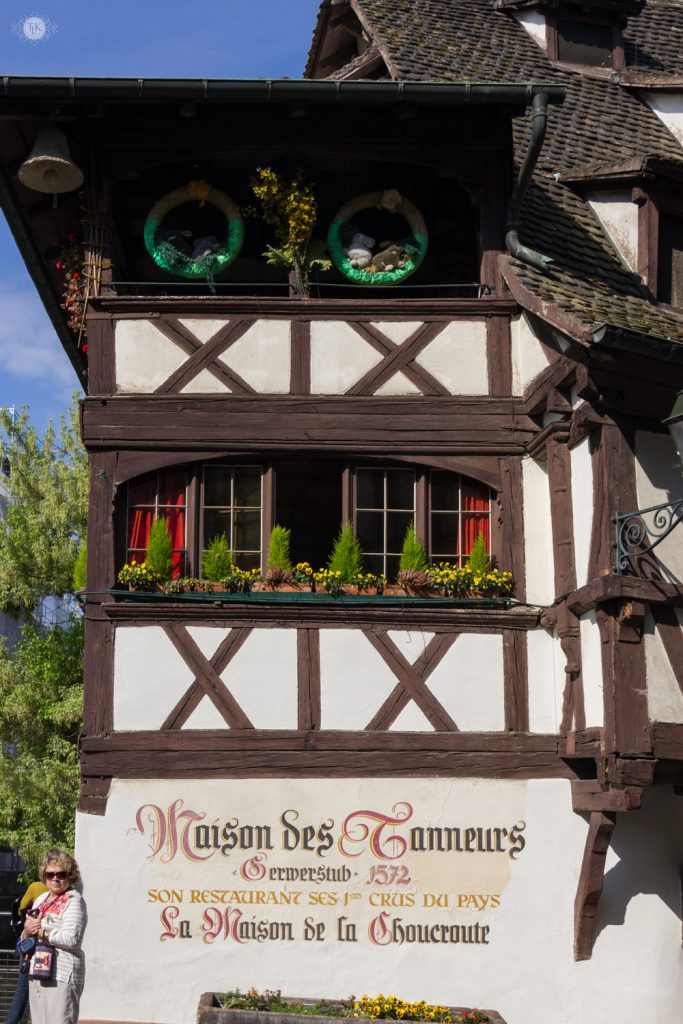
Here is my friend June posing by one of the painted signs on the side of the building.
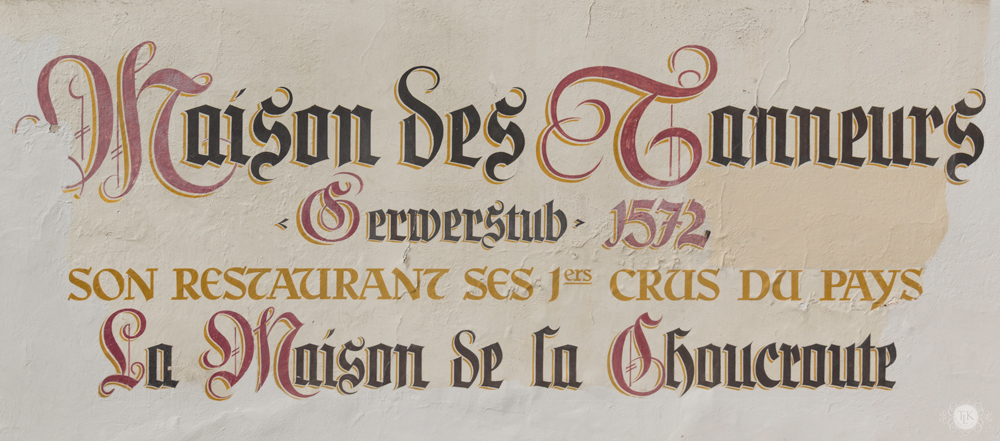
It looks like they were in the process of painting the actual building while we were there, as evidenced by the paint around the lettering. And, as you can guess from the sign, the building is now a restaurant.
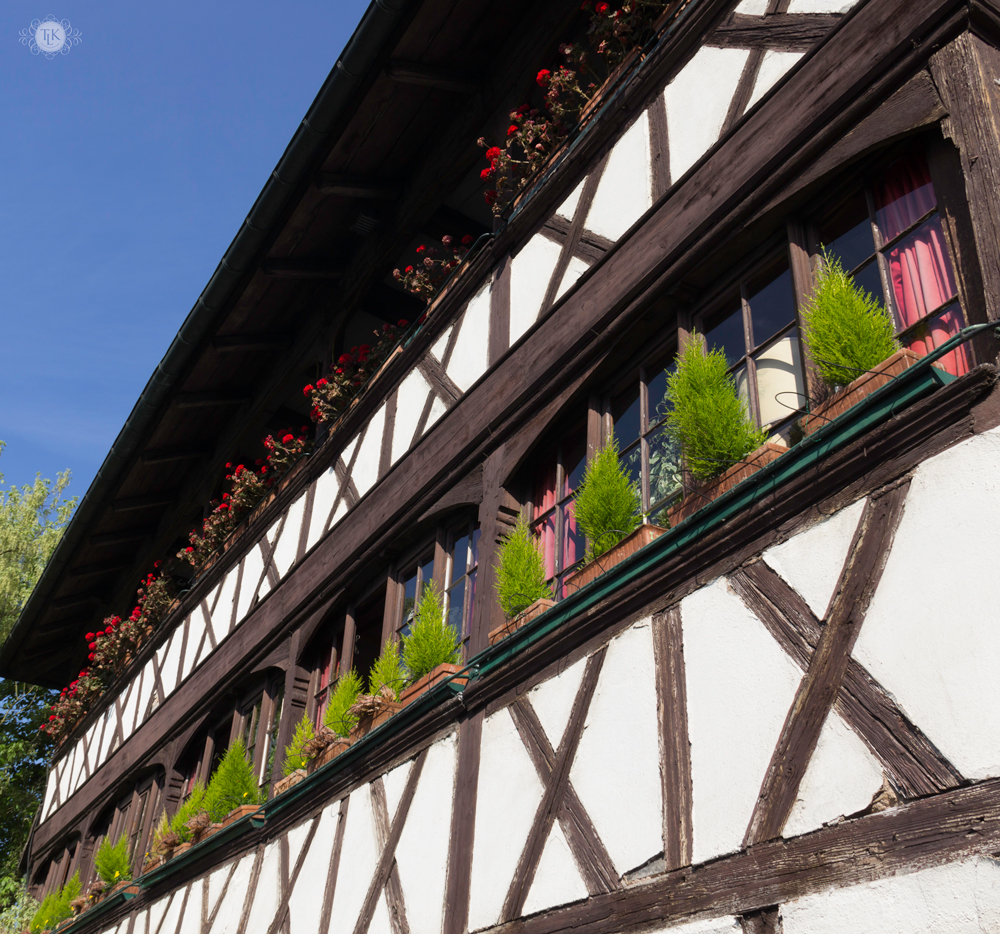
Just look at those window boxes – geraniums on top and evergreens on the bottom. So charming!
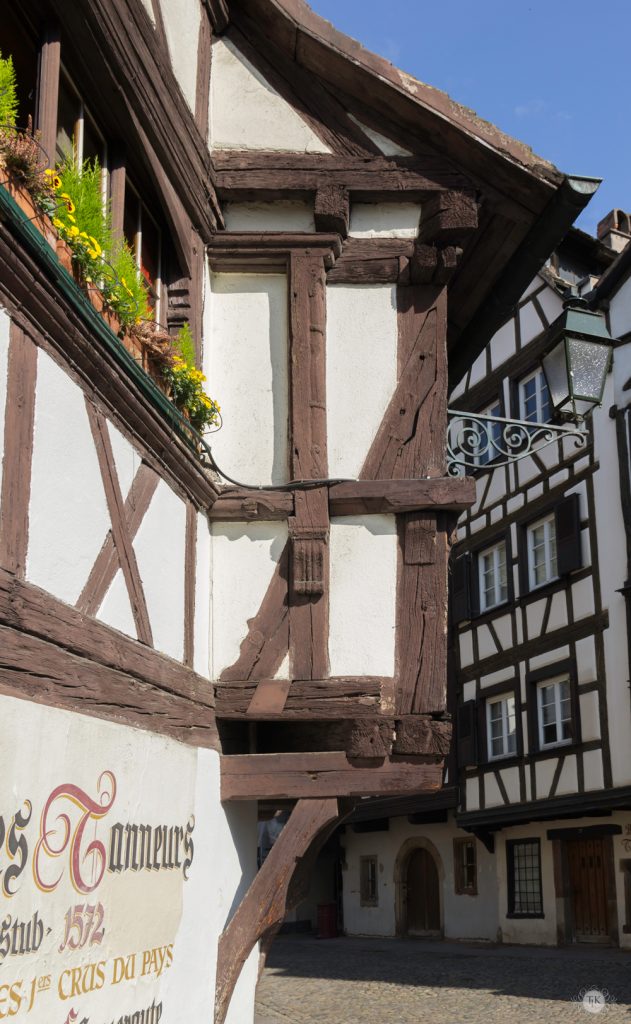
This shows how the upper floor extends out from the bottom floor. This was the corner of the side facing the street. The house was not built on a square foundation. It followed the street and the river so it had an odd bunch of angles.
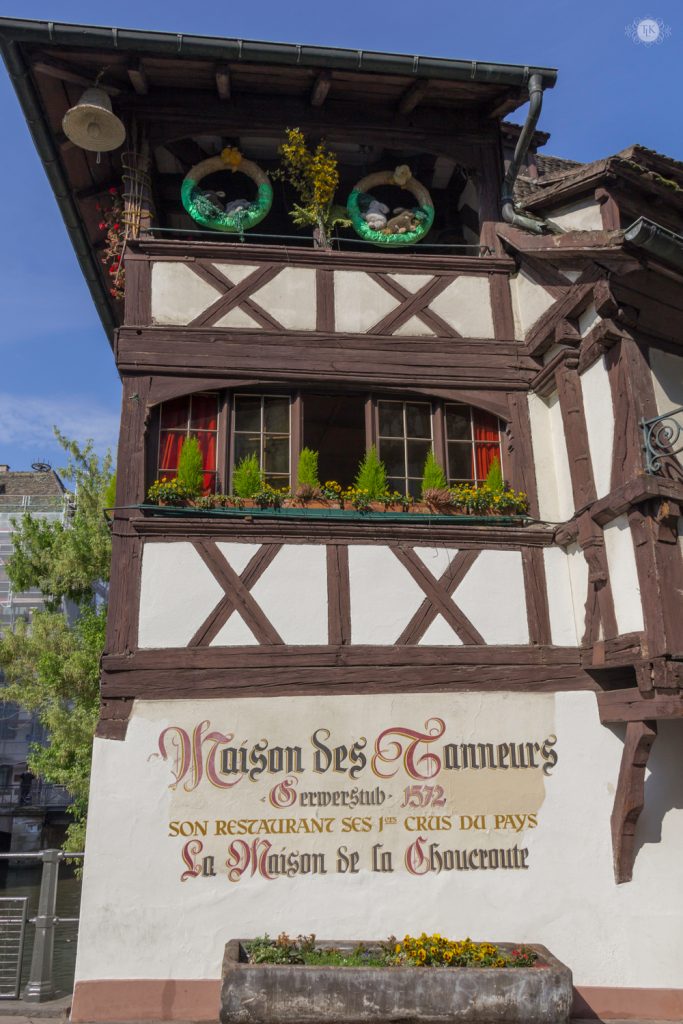
And it was still a few days after Easter, so there were still a lot of Easter decorations everywhere we went.
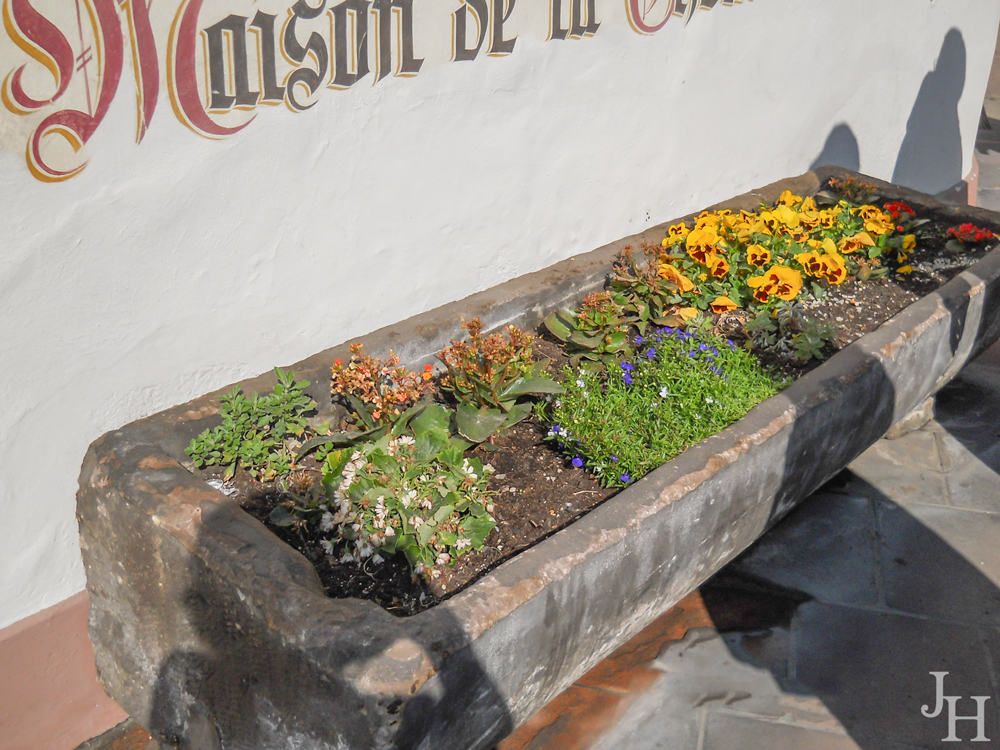
June captured a good shot of that huge flower trough in front of the building. We all wanted to take it home to put in our own gardens.
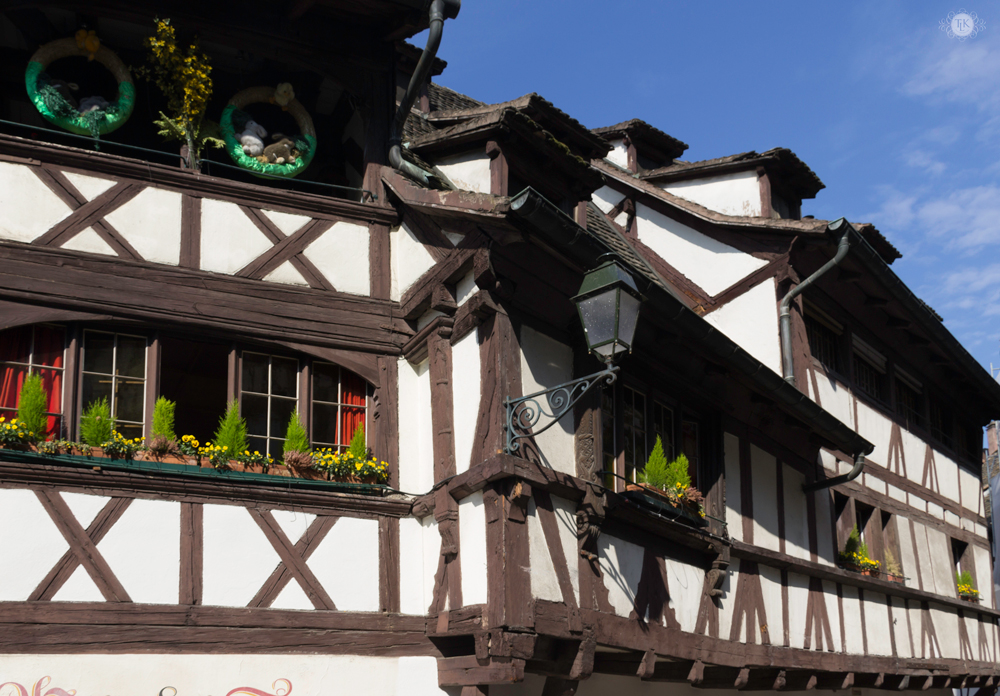
Here is another shot of the upper floor that faced the street, showing you the odd angles. And those sweet flower boxes and planters.
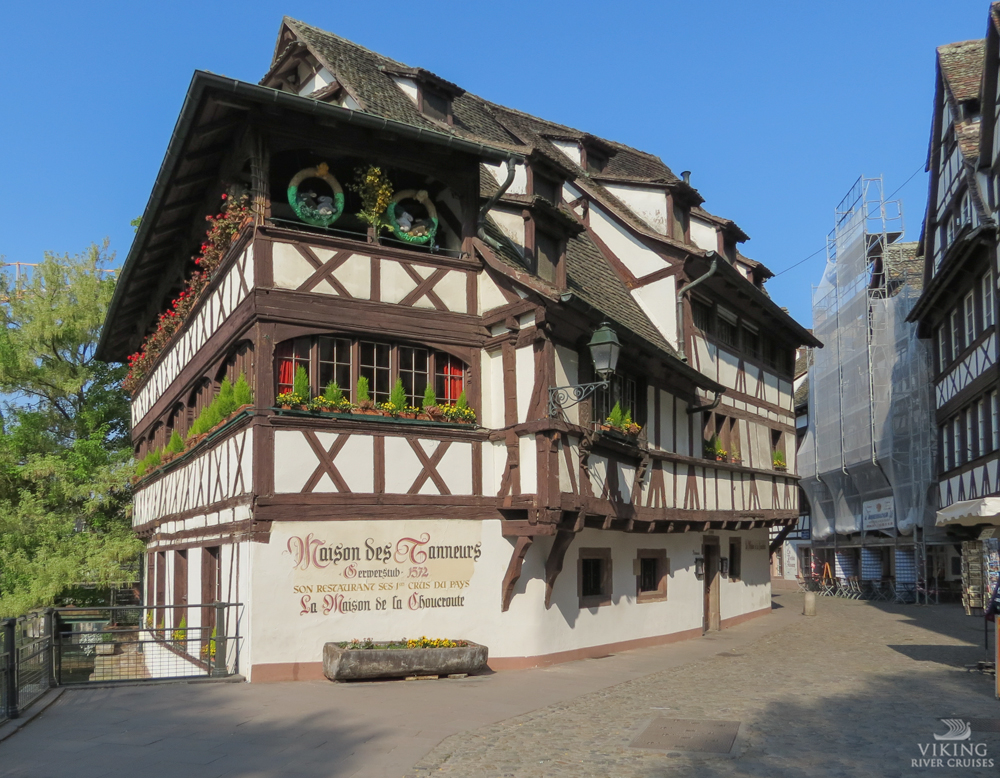
And here is a better shot, showing the crazy corner where the Maison des Tanneurs sits. Hard to believe it has been here for over 400 years! And you can see more Nouveau mixed in with the Vieux. But were were marching on with Claude, our guide, to see more of La Petite France.
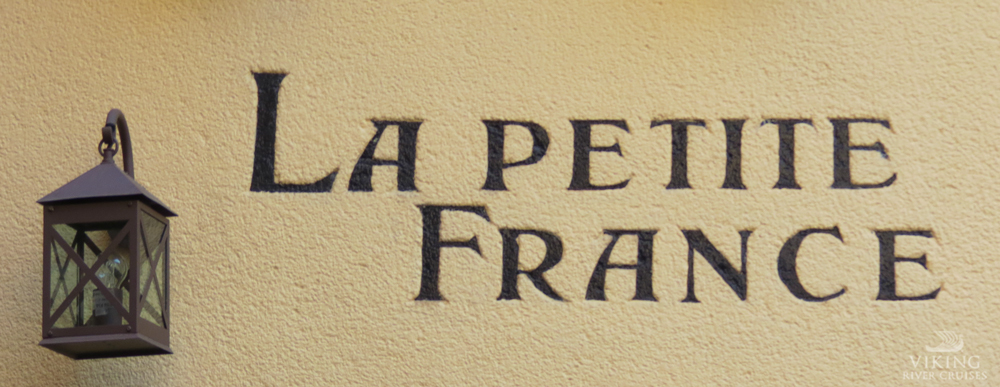
This is not a sponsored post. This is my experience from my trip with Viking River Cruises. Email me to find out how you can save $100 when you book your first cruise with Viking through their referral program.
Leave a Reply